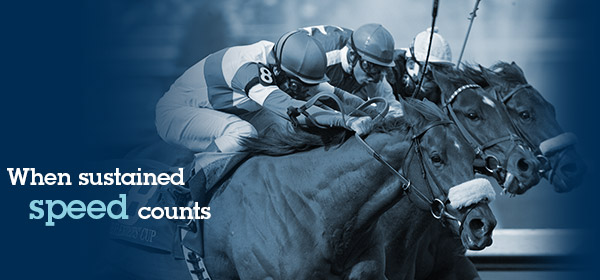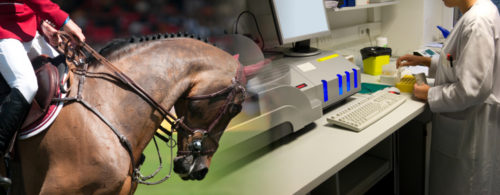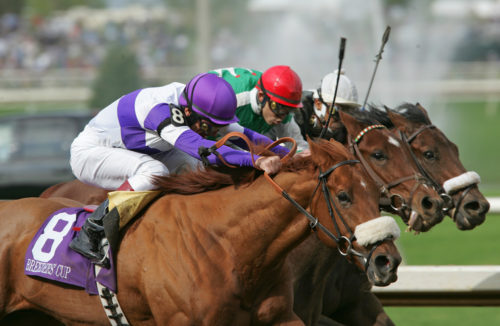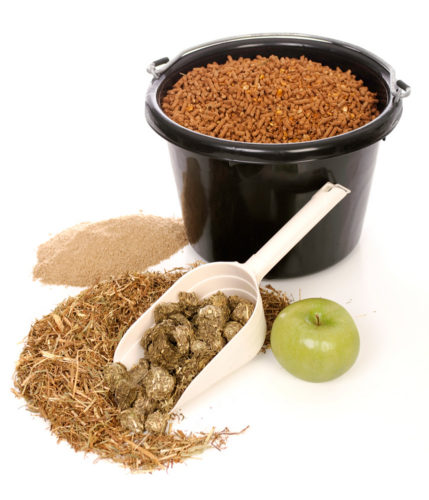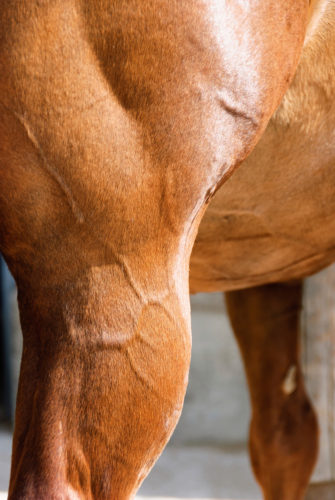Posts by Phillip Dutton:
- Author: Phillip Dutton
- Website: http://racingblue.com/
- Profile: Equine nutritionist Catherine Dunnett is a well respected consultant with Newmarket based Independent Equine Nutrition, a worldwide consultancy business that offers an innovative range of services, including product design and formulation, prohibited substance analysis, nutritional troubleshooting and commercial technical support. Catherine is highly regarded by professional riders, veterinarians and nutritional scientists as having a knowledgeable but practical and pragmatic approach to nutrition. She is a regular contributor to European and American Trainer magazine and is often asked for comment by other well-known publications such as Horse & Hound.
Originally from Anglesey in North Wales, Catherine’s passion for horses grew from an early age and although she has only ever ridden for pleasure, horses have always featured highly in her world and largely drove her career ambitions. A graduate in Biological Science from Bristol, Catherine soon found her niche in research at the Animal Health Trust in Newmarket, where she undertook her PhD in nutrition. Catherine was involved in much of the groundbreaking exercise physiology and nutrition research undertaken in the ‘90’s. A period of time at Dengie horse feeds gave Catherine invaluable experience in the ‘real world’ of commercial horse feed in her role as product development manager and paved the way for the consultancy business.
Today, Catherine helps to shape the formulations and technical information of a wide range of companies all over the world. Catherine is also a director of Racing Blue and is pleased to be associated with STORM®, a ground breaking product in sports nutrition for animals.
Articles published by Phillip Dutton:
Can Dietary Change Impact on Bleeding or EIPH?
Tags: EIPH, Horse performance, horseracing, Nutrition
Category: Horses - Articles for Race and Performance Horses
Date: 8 May, 2018
Exercise induced pulmonary haemorrhage (EIPH) has been a concern for racing all over the world for a long time. There are records as far back as the early 1700s describing bleeding in racehorses of excellent pedigree, most notably a horse called Bartlett’s Childers that was nicknamed Bleeding Childers due to his battles with what is now known as EIPH.
Read more »Naturally Occurring Prohibited Substances, Risks and Responsibilities
Tags: Doping, equine, horse, Prohibited Substances
Category: Horses - Articles for Race and Performance Horses
Date: 10 February, 2017
The inherent risks of prohibited substances associated with horse feed and supplements have historically been highlighted by a series of high profile post-race and post competition positive tests. This can occur due to inadvertent contamination of a feed or supplement with an ingredient that contains a naturally occurring prohibited substance or an intentional ingredient may naturally contain a substance that’s prohibited. Being aware of the risks and your responsibilities as a rider or trainer is a good start to staying on the right side of the regulations.
Read more »Marginal Gains in Performance Horses
Tags: Equine performance, Horse performance, Ilka Gansera Leveque, marginal gains
Category: Horses - Articles for Race and Performance Horses
Date: 16 January, 2017
The marginal gains philosophy is based on the view that a series of small, positive improvements in training and race or competition day processes, will cumulatively result in a significant improvement in competition performance and ultimately contribute greatly to increased success. When seeking potential marginal gains, all areas of the entire process of bringing a horse to a big competition or to the racecourse would need to be evaluated, to look for elements that could be improved by just a small amount. In isolation a 1% difference in performance may not be noticeable, particularly given all the other variables that affect performance on race or competition day.
Read more »Muscle Acidosis and Maximal Exercise in Horses – A Nutritional Intervention
Tags: beta alanine, carnosine, horse, horseracing, muscle buffering, performance supplement
Category: Horses - Articles for Race and Performance Horses
Date: 11 May, 2016
Most trainers will be familiar with lactic acid, although misconceptions might exist as to whether its production is good, bad or indifferent. Lactic acid is produced in muscle as a consequence of anaerobic energy generation and whilst it can be metabolised or reprocessed within muscle, it can and does accumulate during acute periods of maximal […]
Read more »Vitamins for Horses in Sport
Tags: horse, horseracing, performance, Vitamins
Category: Horses - Articles for Race and Performance Horses
Date: 15 April, 2016
Vitamins are a key part of the diet for every horse but are particularly important when we ask more from our horses in terms of exercise performance. The physical signs associated with an obvious deficiency or excess of one vitamin or another are rare; but despite this we should not presume that the level of vitamins provided in our horses’ diet is optimised for performance. Horses are generally quite tolerant of minor deficiencies or excesses with regards to vitamins and so the margin of acceptable intake to prevent health issues is mostly quite wide. Maintenance of health, however, is a separate issue to optimal performance, which is the ultimate target for horses in race and competition horses.
Read more »The Critical Role of Nutrition in Tying Up (rhabdomyolysis)?
Tags: horse, horseracing, Tying Up
Category: Horses - Articles for Race and Performance Horses
Date: 15 April, 2016
A horse with raised muscle enzymes is always a cause for concern for riders and trainers, whether it is a single isolated incident or a regular occurrence. The muscle enzymes (aspartate aminotransferase, AST and creatine phosphokinase, CPK) when present at a high level in blood usually indicates muscle damage. This may simply be a result of overexertion during training, but can signify a more serious issue in the form of exertional rhabdomyolysis (ER) or ‘tying up’. These horses, which are quite often fillies or mares, can be notoriously difficult to train and compete with many lost training days resulting in a decreased opportunity to race or compete.
There has been a slow but steady increase in our knowledge of this disease or syndrome, which in more recent years has been helped by the application of genetic based tests for some forms. An increase in our understanding of the metabolic basis for the syndrome is imperative and will help us to better manage these horses in terms of nutrition and training.
Read more »




